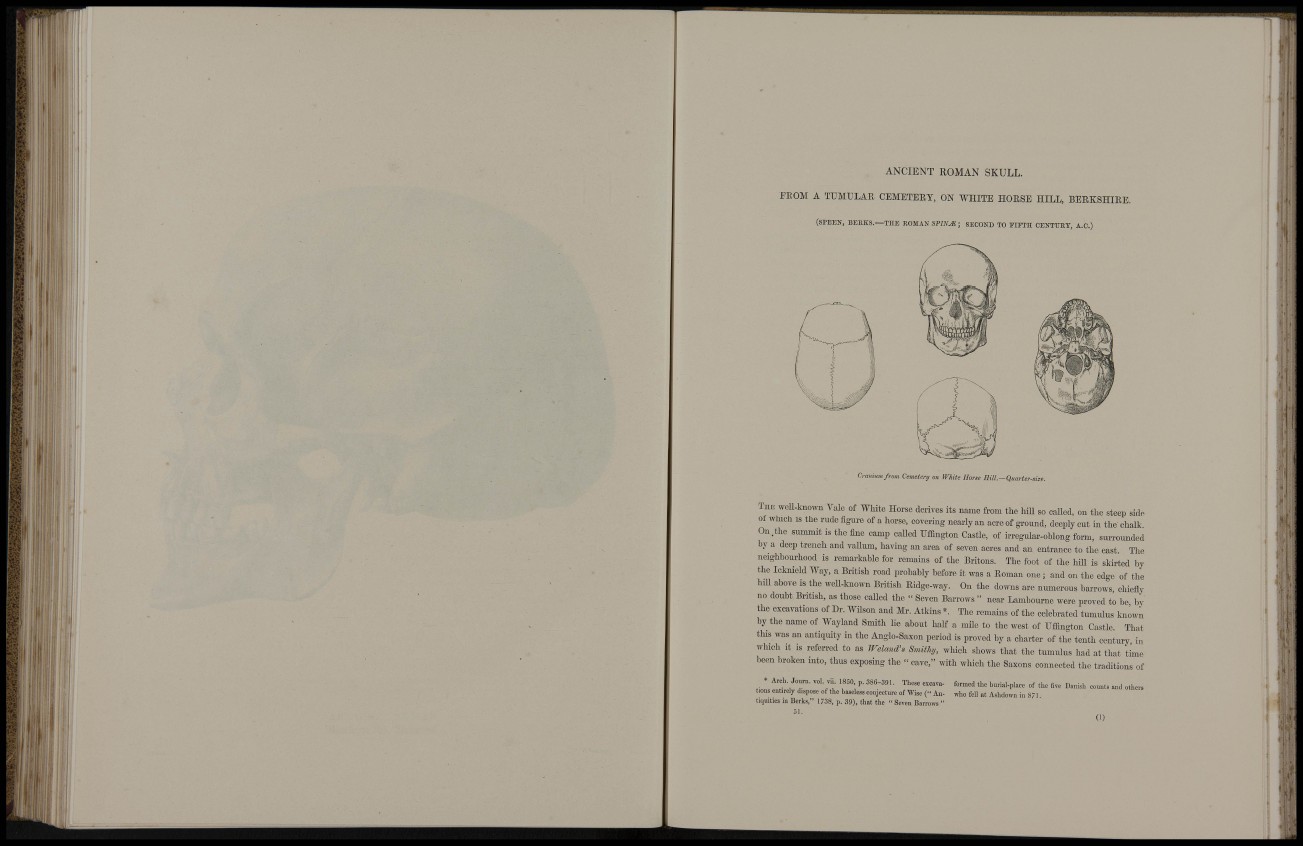
t ' V s
,. II ll
ANCIENT ROMAN SKULL.
PEOM A TUMULAR CEMETERY, ON WHITE HORSE HILL, BERKSHIRE.
(SPEEN, BEEKS.—THE ROMAN S P I N ^ ; SECOND TO FIFTH CENTTJIIY, A.C.)
' IKl
Cranium from Cemetery on White Horse Rill.—QmHer-sise.
THE weU-known Vale of White Horse derives its name from the hiU so called, on the steep side
of which IS the rude figure of a horse, covering nearly an acre of ground, deeply cut in the chalk
On.the summit is the fine camp caUed Uffington Castle, of irregular-oblong form, surroimded
by a deep trench and vaUum, having an area of seven acres and an entrance to the east. The
neighbom-hood is remarkable for remains of the Britons. The foot of the hill is skirted by
the Icknield Way, a British road probably before it was a Roman one ; and on the edge of the
hill above is the well-known British Ridge-way. On the downs are numerous barrows chieflv
no doubt British, as those caUed the " Seven Barrows " near Lambourne were proved to be bv
the excavations of Dr. Wilson and Mr. Atkins The remains of the celebrated tumulus kn^wn
by the name of Wayland Smith lie about half a mile to the west of Uffington Castle That
this was an antiquity in the Anglo-Saxon period is proved by a charter of the tenth centurv in
which It IS referred to as Weland', Smithy, which shows that the tumulus had at that time
been broken into, thus exposing the " cave," with which the Saxons connected the traditions of
* Arch. Journ. vol. yii. 1850, p. 386-391. These excavations
entirely dispose of the baseless conjecture of Wise ( " Antiquities
iu Berks," 1/38, p. 39), that the " Seven Barrows "
.51.
formed the burial-place of the five Danish counts and others
who fell at Ashdown in 871.
M
i i
I
^ I
!
i ^
i t;
I" (
^ l b
:t,: »T1w:!|i i
. I
: i»' i i
m